On Irish sunshine, Turkish melancholy, Cantonese eggs and jasmin Japanese coffee
An April newsletter
I’m writing this April newsletter from my home in Greystones, Ireland. I’ve been here for over three weeks now, and this time at home with my daughter has been much needed. The weather has been particularly beautiful in the last few weeks, and Ireland is stunning when the sun shines.
Some Japan loot
I’m still digesting the food memories and incredible experiences I had in Japan (and I’ll continue writing about it for a while), but here’s a little overview of what I managed to bring back in my suitcase! It was tough to limit myself to just a few items, as I literally wanted everything! My suitcase was already pretty full, and I was traveling with a lot of instruments, so I had to really restrain myself. But as you can see, I did pretty well!
On the left, you’ll find some kitchen gear: a few lovely wooden soup bowls, spoons, and chopsticks for both me and my daughter. I also got a beautiful soup pot, cooking chopsticks, and a rather fancy wok ladle.
Additionally, I picked up a cool sesame grinder (still wrapped in plastic). I remember seeing this in a ramen shop years ago, and after using it a bit, I can confirm that the smell and flavor of freshly ground toasted sesame is something else! I love sesame—it's a key ingredient in Japanese cuisine, and it also appears prominently in Sicilian cuisine. It likely arrived in Sicily with the Arabs and is widely used on bread, biscuits, and other baked goods.
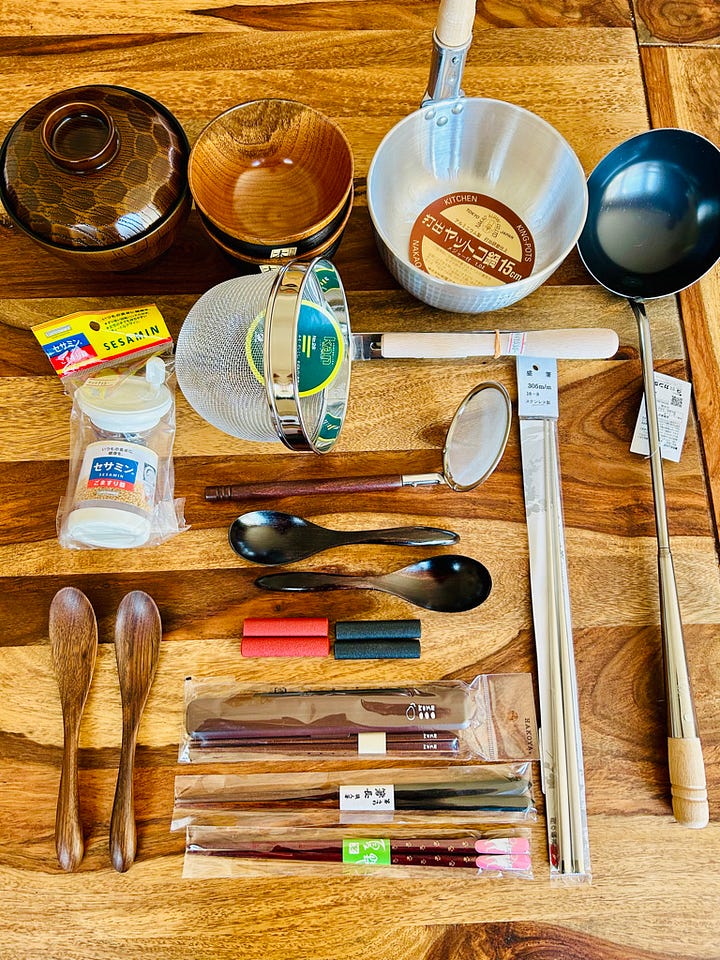
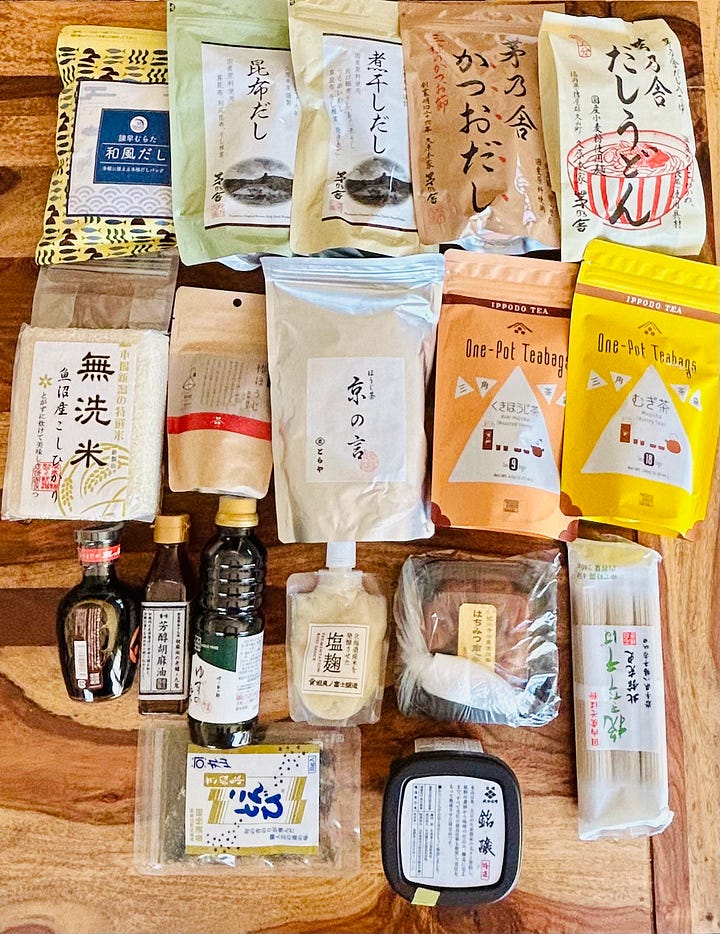
On the right side, you can see some food items. The top row is primarily dashi. If you’re not familiar with it, dashi is a base stock that serves as the foundation of much of Japanese cuisine. Traditionally, it’s made with kombu seaweed and katsuobushi (shaved bonito flakes), but there are many variations. Dashi is quite easy to make, though it takes time, and you need really good ingredients, which are often hard to find outside Japan. Many Japanese people use powdered dashi (in teabag form) daily, and the high-quality stuff tastes excellent. One brand you might find in the U.S. or in some European cities is Kayanoya. It’s perfect for making miso soup, for example. Simply steep one teabag in 400ml of boiling water and then add good miso paste, along with vegetables, seaweed, seafood, etc.
On the second row, you’ll find some wonderful green tea—especially Hojicha, which is made with toasted leaves and has a smoky flavor—as well as a new discovery: barley tea or mugicha (which I tried in a soba restaurant). There's also a small bag of excellent rice, something that’s surprisingly hard to find here in Ireland. On the two bottom rows, you can see some top-quality shoyu (soy sauce), toasted sesame oil (which is incredibly delicious), ponzu, koji paste (for marinating), umeboshi (sour plums), soba noodles, and craft miso paste.
A special mention goes to a small jar of yuzu kosho (below top left). If you’re not familiar with this condiment, it’s a fermented paste made from yuzu peel (a Japanese citrus, in the direction of lemon), chili pepper, and salt. It’s spicy and fresh at the same time and is especially delicious with salmon. The jar on the top right is a paste made with uni (Japanese sea urchin), and I can’t wait to try it on pasta.
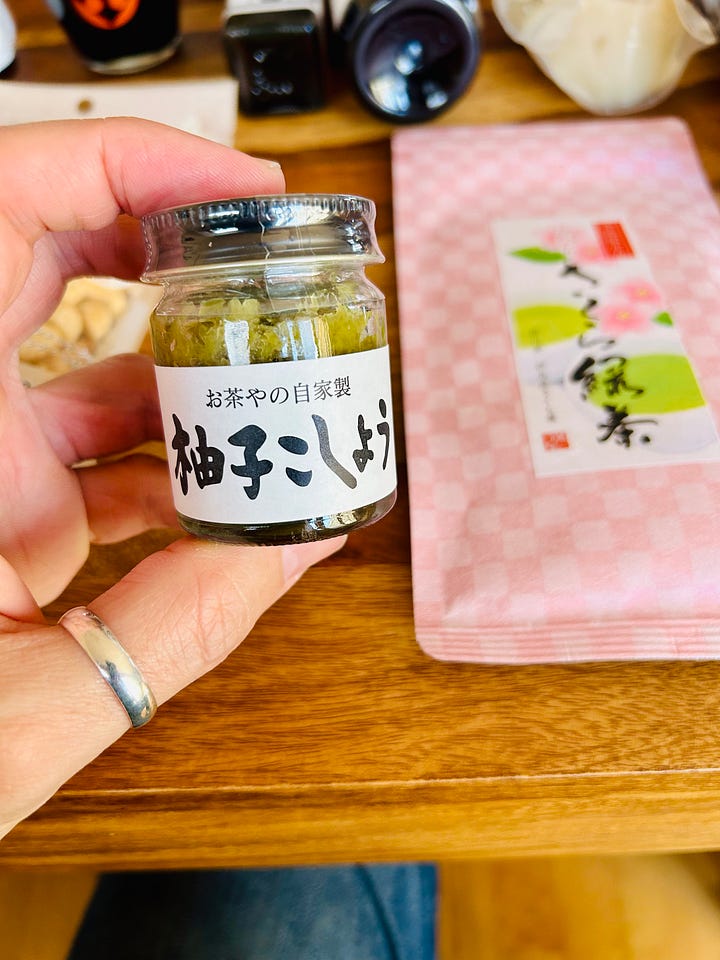
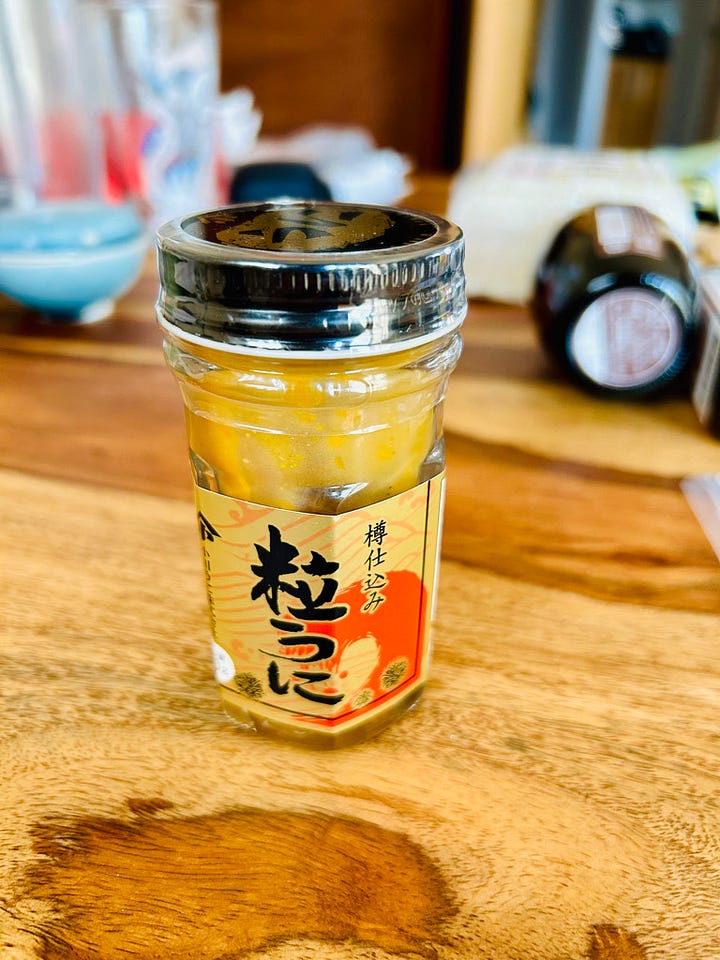


Other noteworthy purchases include a sobayu container (just here above left). This is the container used to collect the cooking liquid from soba noodles, which you then pour into the leftover dipping sauce (tsuyu) at the end of the meal to make a delightful soup. Read more about soba here.
On the right, you’ll see two food-themed keychains: an onigiri (rice ball) on the left and an ikura (salmon roe) gunkan maki (a type of sushi). These come from one of those shops in Japan that sell perfect plastic replicas of food for restaurant displays. It’s a big thing in Japan, and I’ll talk more about it in the future.
What I’ve been listening to
In the last month I have been listening to a lot of Turkish music. This has been a love of mine for a very long time, and the passion for it seems to resurface every so often. There’s something incredibly melancholic about most Turkish music, and makams (the system of modes common in Mediterranean music) speak to me in a deeply intense way. I’ve recently discovered two beautiful albums that I’d love to share with you. They’re both short, sparse and intense vocal albums, making them perfect for evening listening.
The first album is by bağlama (saz) player Coşkun Karademir and singer Gülay Hacer Toruk. Coşkun plays a unique instrument he designed himself, which has nylon strings and sounds like a cross between a guitar and a saz.
The second album is by singer and kanun player Çağlar Fidan. It’s mostly a solo album with a few guest appearances.
I hope you enjoy these albums! Feel free to let me know your thoughts in the comments below.
What I have been cooking
Since returning, I’ve been cooking a lot of Japanese food, almost as if I want to keep that flame alive on my tongue.
But aside from that, I’ve been somewhat obsessed with a recipe for Whampoa-style Cantonese scrambled eggs that I learned from Kenji Lopez-Alt’s book The Wok. I love this recipe because it challenges the usual methodology for cooking eggs. The eggs are cooked in a wok at a relatively high temperature, something you normally wouldn’t do with eggs. This recipe works because, as you prepare the eggs, you add a bit of a slurry made with cornstarch and water, which prevents the eggs from becoming rubbery or overcooked. The eggs are also seasoned with fish sauce and butter.
They’re so decadently lush and delicious on rice—there’s a bit of char from the high heat, and yet they remain runny at the same time. Personally, I think this is the only way I want to eat eggs these days.
I could spend many words trying to explain how to make these, but instead, Kenji himself made a YouTube video recently, so I recommend watching it:
Another recent obsession of mine has been farinata, a thick pancake made from chickpea flour and water (plus oil and salt). It’s traditional in Liguria, parts of northern Tuscany, and the Cote d'Azur/Provence (where it’s called socca). It’s also very common in Torino, where it’s often served as a starter before pizza.
It’s incredibly simple to make, but I didn’t have much success until I bought myself a small round copper pan, which is traditionally used. I also use my pizza oven because it’s difficult to get the right crunchiness in a regular oven. My recipe comes from Giallo zafferano, and I’ll share the English version here in case you want to try it—it even gives directions for making it in a conventional oven.
What I have been drinking
Lately, I’ve been diving deeper into the world of filter and pour-over coffee, and I’m loving the entire process. Don’t get me wrong—I still love the bold flavor hit of an espresso, but it’s finished in three seconds, and lately, I’ve been craving the experience of sitting down with a beautiful cup of coffee that will last me a little longer, especially in the morning.
One of the best additions I’ve made to my kitchen is a Comandante hand grinder. These aren’t cheap, but I’ll say it—this is the best investment you can make if you want to take your coffee to the next level. It’s far more important than a coffee machine or any other piece of equipment. I was truly shocked at the difference when I used this grinder for the first time, with the same coffee beans and method. Also, Comandante is the gold standard in the coffee industry, and many online coffee recipes specify grinder settings for this particular model. On top of that, it’s a beautiful piece of equipment, and hand grinding coffee is an incredibly satisfying experience.
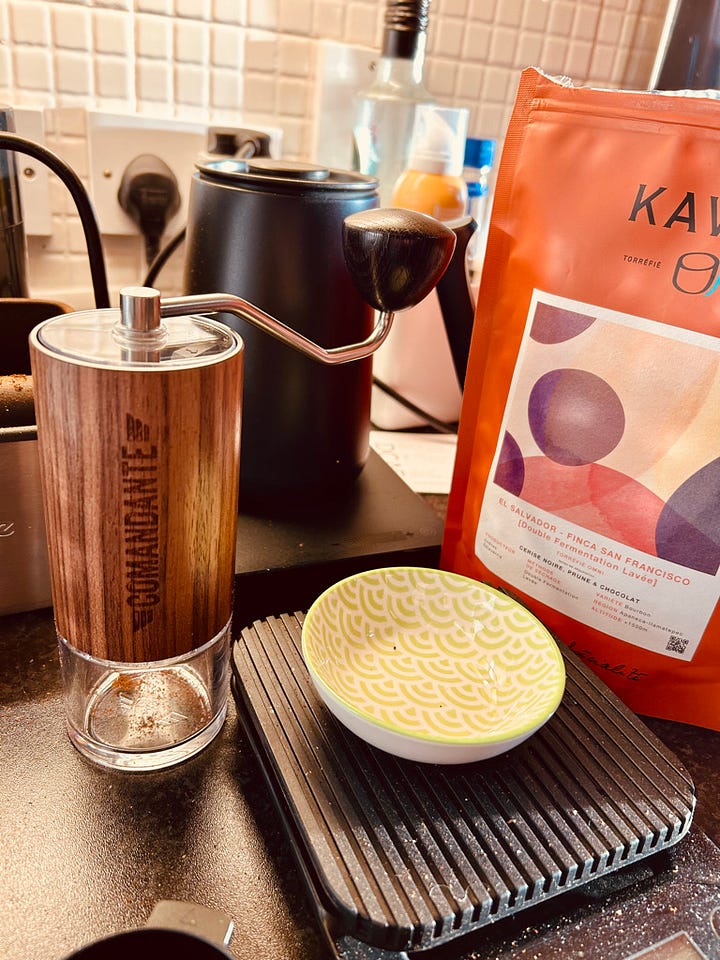
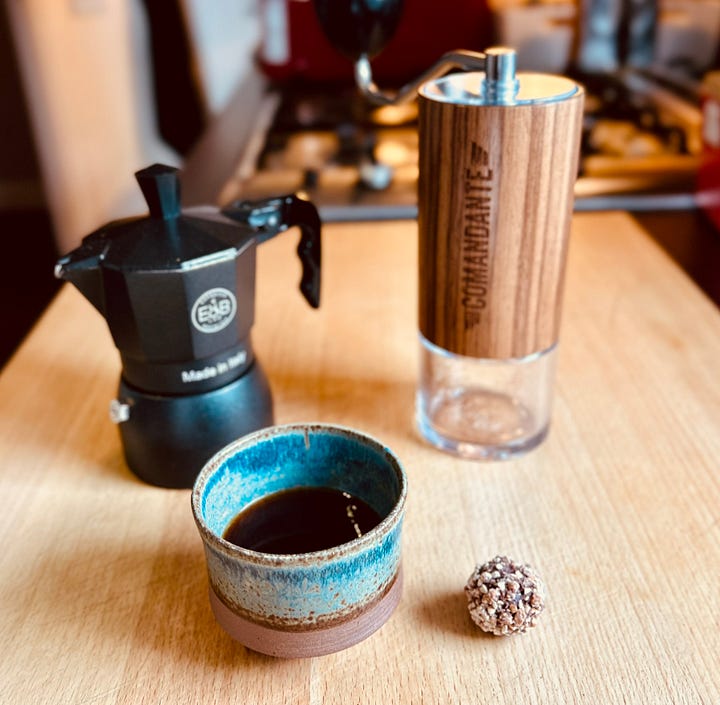
And of course, if you’re serious about coffee, always grind your coffee just before brewing. I can’t emphasize this enough. Pre-ground coffee has a very short shelf life and will never taste as good as freshly ground coffee. Did you know that even fancy commercial coffee brands inject the smell of freshly ground coffee into their cans and bags, so they smell like fresh coffee when you open them?
These two small bags of coffee I bought in Japan are quite special. Both come from Colombia, one of my favorite coffee-producing countries. The white bag contains a fruity, exotic coffee, while the black one holds a delicious Geisha coffee (considered one of the highest-quality varieties), which has an incredible jasmine scent and aroma. I purchased both bags from specialty coffee shops after trying them and falling in love with the flavors.
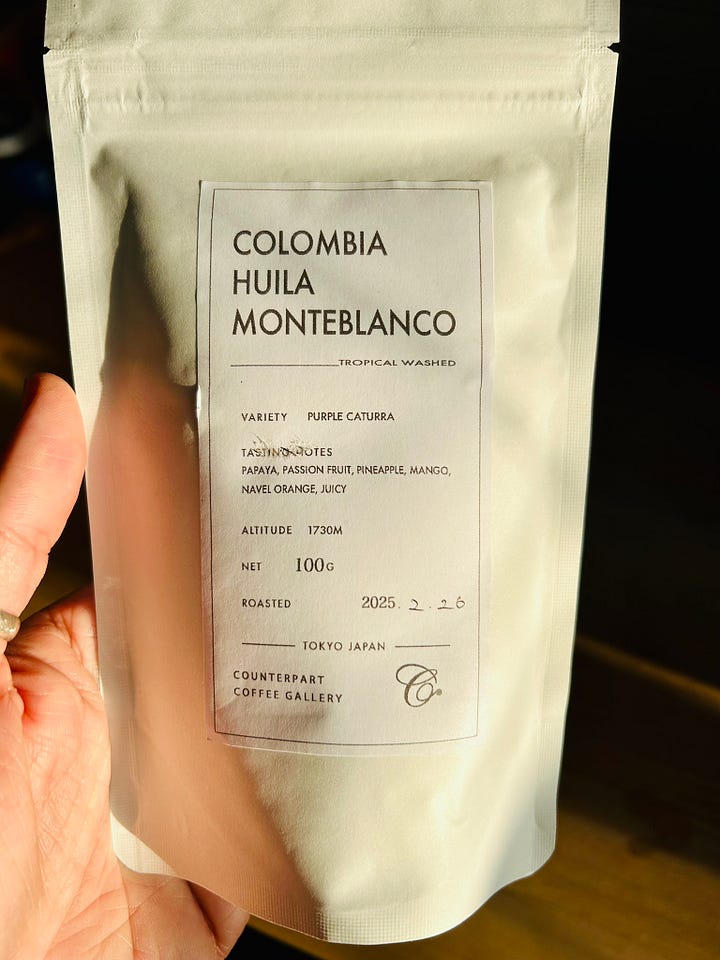

Let me know if you have any questions about anything I’ve mentioned above in the comments.
A presto!

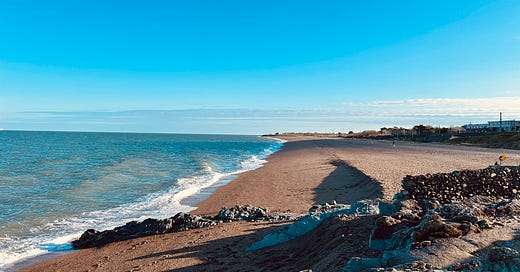



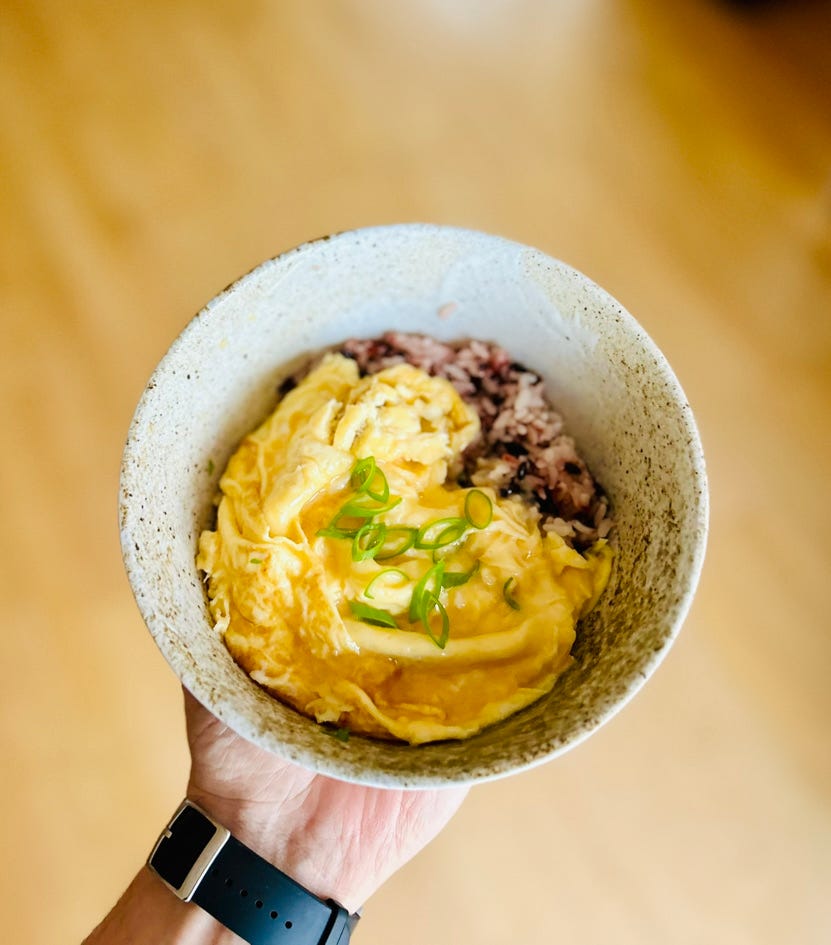
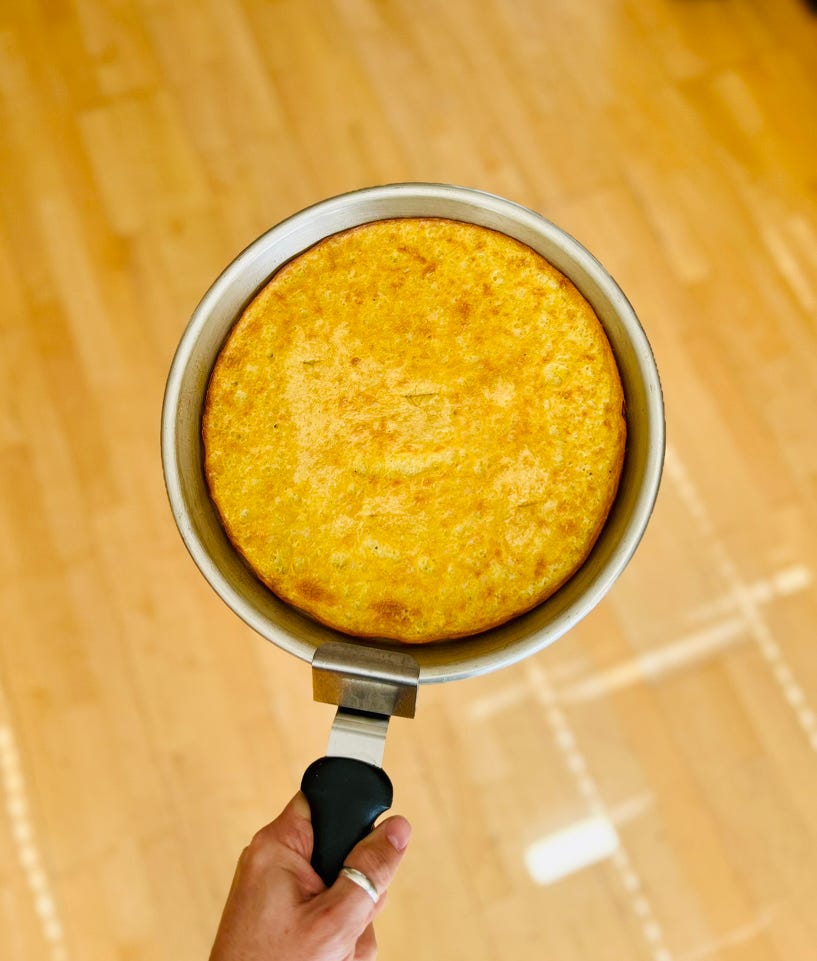
What a lineup of cool items! Next time you are here, you might want to visit Ninben's Nihonbashi Dashi Bar (日本橋だし場 -- the 場 and Bar is a word play) . You can try a variety of dashi as soft drinks as well as other light dishes there. I LOVE this place! Ninben (founded in 1699) is probably the first name most Japanese people think of when it comes to dashi specialty companies.
https://www.ninben.co.jp/store/dashiba/
There is an adjacent restaurant, too.
https://www.ninben.co.jp/store/hanare/
A Kayanoya shop is in the vicinity. Maybe you already visited there!
That must have been a huge suitcase. I would be interested in knowing more about how sesame is used in Sicilian cuisine.